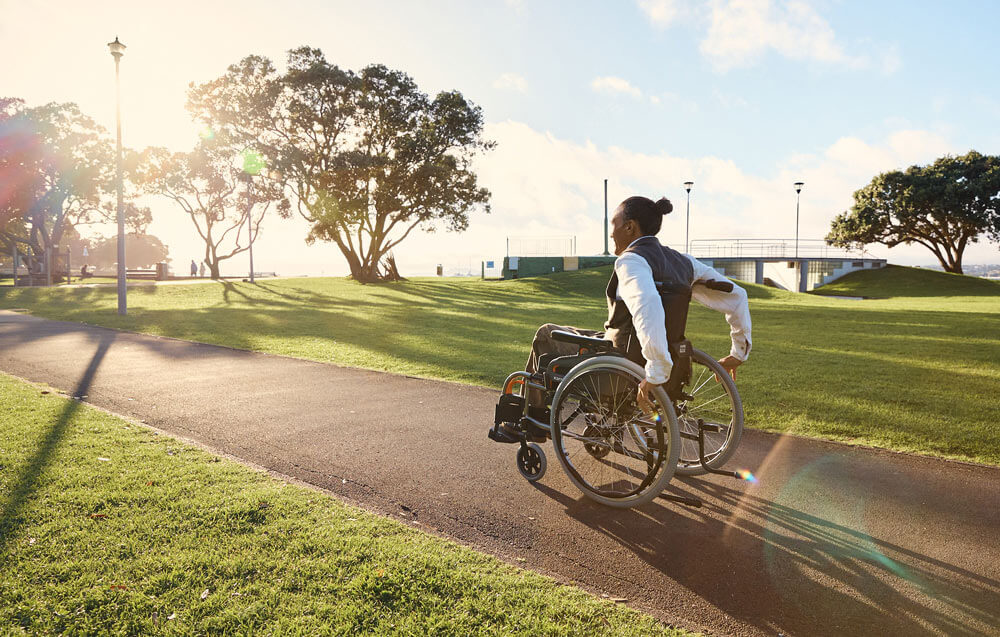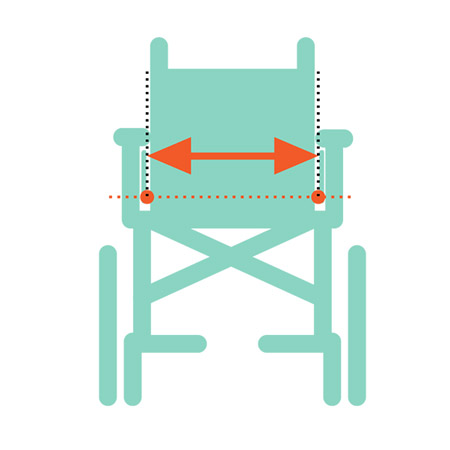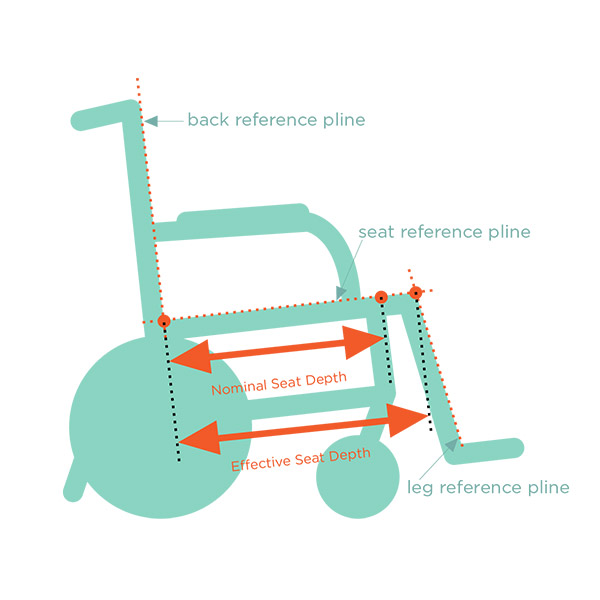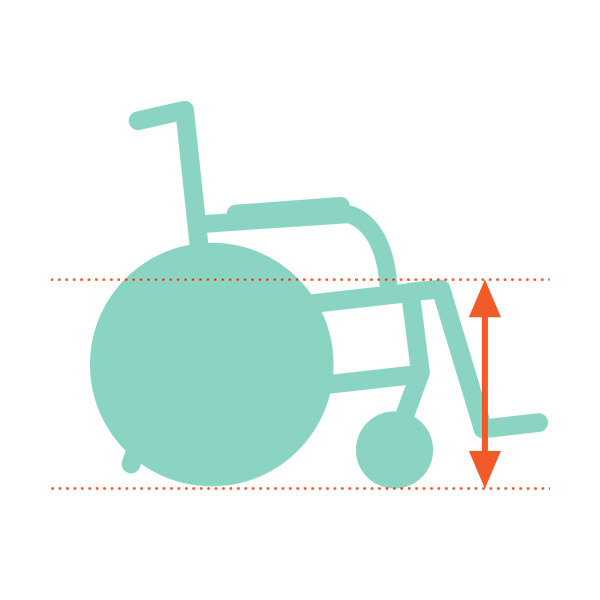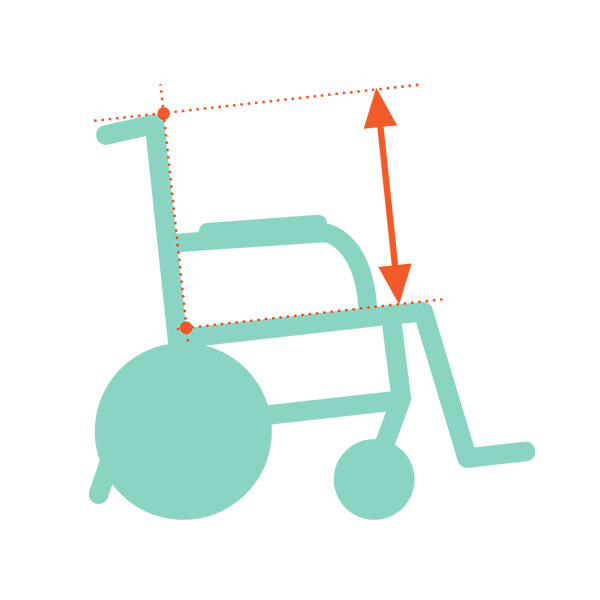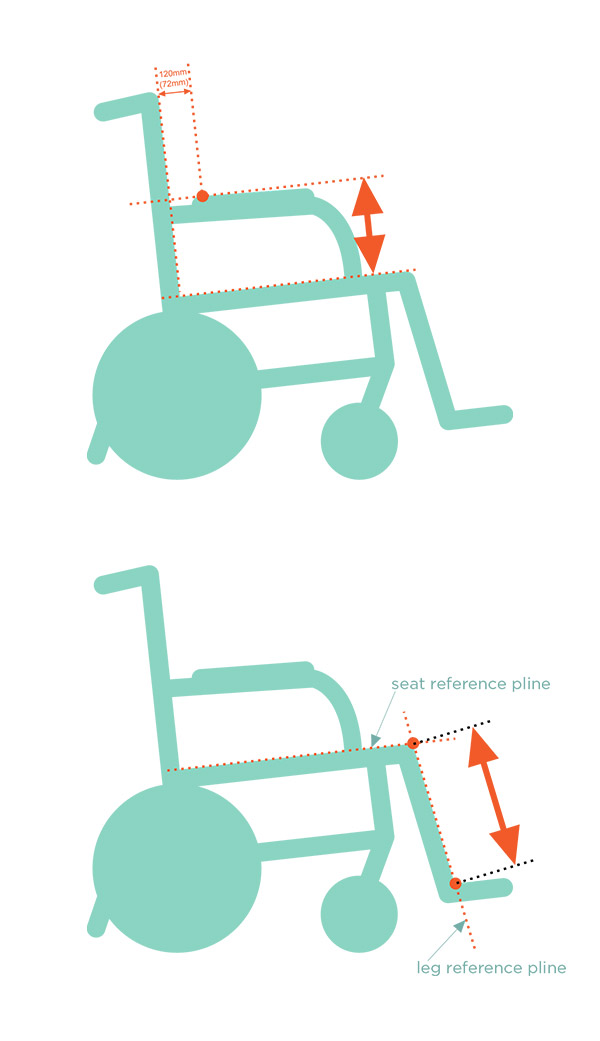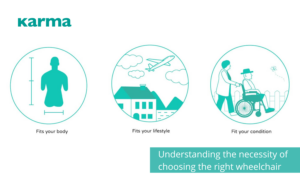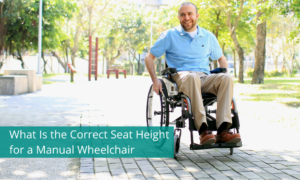Choosing the right wheelchair isn’t just about ticking boxes – it’s about enhancing daily life. Whether you’re navigating a local market or enjoying a stroll in the park, the right wheelchair provides more than mobility – it delivers comfort, safety, and stability for maintaining the posture, which are the key points for the users to join in the activities they want confidently and independently.
The different functions, dimensions and even materials on the wheelchair would be concerned for wheelchair selections according to the users’ ability, environment and activity. In this guide, we’ll walk you through everything you need to know about achieving the perfect wheelchair fit – from essential measurements to long-term maintenance.
Why Wheelchair Size Matters
It might seem like a small detail, but wheelchair size plays a major role in your overall comfort and well-being. Here’s why it matters:
Better Posture and Stability
Protecting Skin and Spine Health
Easier, More Efficient Propulsion
Key Measurements and Methods
Getting the perfect fit starts with accurate measurements. For users without significant physical deformities or abnormal muscle tone:
- The pelvis should be adequately supported from the rear to maintain a neutral position.
- The back should have sufficient surface to keep the torso upright, and the thighs should be slightly abducted and positioned horizontally on the seat surface.
- The lower legs should be firmly supported on the footplate without causing the knees to elevate or drop. The knees should be flexed at an angle of 80 to 90 degrees.
- If the armrests are necessary for the users to join the target activities, the armrests should support the elbows and forearms properly with the shoulder slightly flexed at 15-20 degrees.
Once the seating position has been properly set, it is necessary to obtain accurate body dimension measurements. Here are the key dimensions to consider:
Seat Width
How to Measure: Before determining the correct seat width, we need to measure the widest part of the thigh. The appropriate wheelchair seat width should be no more than 2 inches wider than this measurement.
Why It Matters: An excessive narrow seat causes pressure points on the sides; If the seat is too wide, the user may easily lose stability during propelling due to the distance between the handrims. The right seat width keeps the user secure without restricting movement.
Seat Depth
How to Measure: measure the distance from the lower back (buttocks) to the back of the knee, then subtract about 2 inches (5 cm). This leaves enough space to prevent the seat edge from rubbing against the back of the legs while still offering full thigh support.
Why It Matters: Proper seat depth supports the thighs, promotes healthy blood circulation, and improves overall seating stability.
- Too shallow? The thighs aren’t fully supported, which can lead to a feeling of instability and pressure on a smaller contact area.
- Too deep? The seat may press into the back of the knees, causing discomfort. Users often slide forward to relieve that pressure, leading to slouching posture and increased risk of pressure sores on the buttocks.
Seat-to-Floor Height
How to Measure: Seat to floor height is measured from the top of seat cushion to the floor.
Why It Matters: Seat-to-floor height affects how easily a user can transfer, reach the ground, and maintain proper posture. It also impacts whether users can foot-propel, fit under desks, or align properly with beds and other surfaces. That’s why adjustable seat-to-floor height is a feature offered in many custom or mid-high end wheelchairs, like KARMA’s Flexx.
Backrest Height
How to Measure: Measure from the top of the seat surface to the top edge of the backrest.
Why It Matters: A higher backrest provides more trunk support—ideal for users with weak core muscles or poor balance. A lower backrest allows greater upper limb freedom for self-propulsion or active users who need a wider range of motion. The wrong height can lead to discomfort, poor posture, or fatigue.
Armrest and Footrest Adjustments
How to Measure: Armrest height is the vertical distance from the seat surface to the top of the armrest. The footplate height should be measured from the seat to the bottom of the shoe, with the knee bent at 80 to 90 degrees.
Why It Matters: Proper arm and leg positioning reduces fatigue, encourages better posture, and prevents shoulder strain or slouching. A footrest height that’s too high may cause the feet to dangle, increasing pressure on the thighs and making transfers harder. Too low, and the knees may sit too high, leading to poor posture and pressure on the tailbone.
Getting the right measurements helps you choose a wheelchair that’s supportive, comfy, and smooth to roll with.
Common Pitfalls to Avoid
Even with good intentions, it’s easy to overlook details that can compromise comfort and safety. Here are key mistakes to watch for:
Relying on Standard Sizes: Wheelchairs are not one-size-fits-all. Ppersonal measurements are critical to ensuring the best fit.
Skipping Re-measurements: Weight changes, aging, or shifting health needs can affect fit. Reassess your measurements periodically.
Skipping Professional Input: DIY measurements are a start, but a mobility specialist or occupational therapist can provide a more precise and tailored fitting.
Overlooking Seat Depth and Footrest Height: These two dimensions directly affect circulation and ease of movement. Don’t underestimate their importance.
Avoiding these pitfalls will set you on the path to a more comfortable and secure wheelchair experience.
Maintaining a Proper Wheelchair Fit Over Time
A great fit isn’t static – it should evolve with you. Here’s how to ensure your wheelchair remains supportive:
- Watch for Warning Signs:
Pressure injuries, new aches or pains, and increased difficulty maneuvering the wheelchair may indicate changes in the user’s physical condition. Stay alert to these signs and make necessary adjustments to the seating or setup as needed. - Inspect Regularly:
- Look for signs of damage such as sagging seat upholstery, worn tire treads, or malfunctioning brakes. Addressing these issues early can prevent more serious problems down the line.
- For users who self-propel using air-filled tires, keeping the tires inflated to the recommended pressure will help maintain propulsion efficiency and reduce the risk of upper limb injuries.
- Regular cleaning of wheel and caster axles supports smooth rolling and overall performance.
- Routinely check that all bolts and nuts are secure. Loose components can compromise safety and lead to mechanical failure.
- Schedule Annual Professional Maintenance: Have the wheelchair professionally serviced at least once a year. This not only helps maintain propulsion efficiency but also prevents safety risks associated with long-term wear, neglect, or mechanical deterioration.
Final Thoughts
If you don’t know where to start, you may consider contacting local wheelchair assessment service.
At Karma, we offer the tools and customization needed to find the perfect match.
Consult a specialist, review your measurements, and explore options tailored just for you. You deserve a wheelchair that supports not just your movement, but your life.
Reference
- Rehabilitation Engineering & Assistive Technology Society of North America. (2012) RESNA Position on the Application of Ultralight Manual Wheelchairs.
- World Health Organization (2012). Wheelchair Service Training Package – Basic level.
Keep Reading



